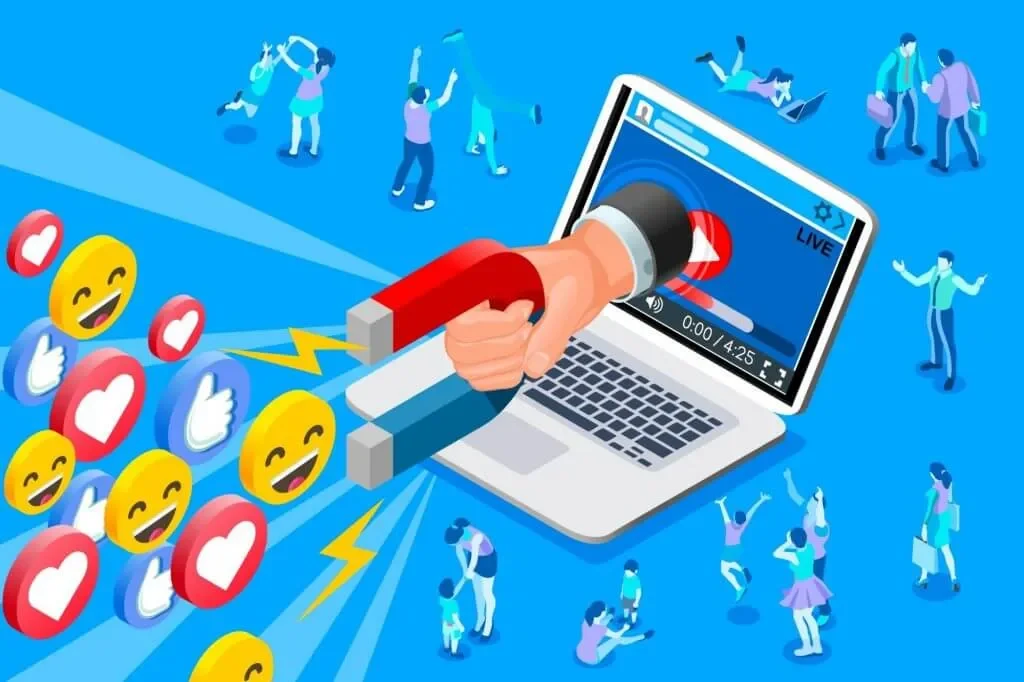
Executive Summary
In the age of social media, becoming an influencer is more than just posting content; it’s about building a personal brand, connecting with an audience, and creating meaningful influence in a niche. Influencers are individuals who have the power to shape opinions, trends, and consumer behavior through their online presence.
This guide explores the steps to become an influencer, including identifying your niche, building your brand, growing your audience, monetizing your influence, leveraging tools, and sustaining long-term success. Whether you are starting from scratch or looking to expand your reach, this comprehensive guide provides a roadmap for aspiring influencers.
Table of Content
1. Understanding the Role of an Influencer
1.1 Definition
An influencer is someone who has established credibility in a specific niche, possesses a dedicated following, and can affect the purchasing decisions, opinions, or behaviors of their audience. Influencers create content that resonates with followers, drives engagement, and often collaborates with brands to promote products or services.
1.2 Types of Influencers
Influencers can be categorized based on follower count, niche, and platform:
- Mega Influencers
- Followers: Over 1 million
- Typically celebrities or public figures
- Broad reach but less niche-specific engagement
- Macro Influencers
- Followers: 100,000–1 million
- Strong presence in a niche, often industry experts
- Can partner with brands for large-scale campaigns
- Micro Influencers
- Followers: 10,000–100,000
- High engagement rates and loyal audience
- Often perceived as authentic and relatable
- Nano Influencers
- Followers: 1,000–10,000
- Highly engaged and community-driven
- Ideal for hyper-targeted campaigns
1.3 Importance of Influencers
Influencers play a crucial role in modern marketing and social interaction because they:
- Build trust and credibility among followers
- Drive brand awareness and product sales
- Shape opinions, trends, and culture
- Serve as content creators and storytellers
2. Identifying Your Niche
2.1 What is a Niche?
A niche is a focused segment of a market that aligns with your expertise, interests, and passion. Choosing the right niche is essential for attracting a loyal and engaged audience.
2.2 Steps to Identify Your Niche
- Assess Your Interests and Expertise
- Make a list of topics you are passionate about
- Identify areas where you can provide value or unique insights
- Research Market Demand
- Use Google Trends, social media hashtags, and forums to analyze audience interest
- Evaluate competition and opportunities for differentiation
- Define Your Audience
- Age, gender, location, interests, and online behavior
- Understand the pain points, desires, and content preferences of your target audience
- Test Your Content
- Create sample content to gauge engagement
- Adjust your niche or style based on audience response
Popular Influencer Niches:
- Lifestyle and personal development
- Fitness and wellness
- Beauty and fashion
- Travel and adventure
- Food and nutrition
- Technology and gaming
- Finance and entrepreneurship
- Education and learning
3. Building Your Personal Brand

3.1 Definition of Personal Brand
A personal brand is how you present yourself online, including your personality, style, values, and expertise. Your brand differentiates you from others and makes you recognizable in your niche.
3.2 Steps to Build Your Personal Brand
- Define Your Unique Value Proposition (UVP)
- What makes you stand out?
- What value do you offer your audience?
- Create a Consistent Visual Identity
- Logo, color palette, fonts, and photo style
- Cohesive aesthetic across all social media platforms
- Develop a Voice and Tone
- Decide on communication style: friendly, professional, informative, humorous
- Maintain consistency in captions, posts, and messaging
- Tell Your Story
- Share your journey, experiences, challenges, and successes
- Authentic storytelling fosters deeper connections with followers
- Set Clear Goals
- Build audience, increase engagement, collaborate with brands, or monetize content
- Use SMART goals (Specific, Measurable, Achievable, Relevant, Time-bound)
Related Topics to Explore
Becoming an influencer requires a blend of creativity, strategy, and management skills.
To strengthen your understanding of the business and analytical sides of personal branding, explore these related articles:
- What Is Marketing Management? – Learn how effective relationship and audience management boost influencer growth.
- What Is Business Management? – Discover how strong organizational skills help influencers handle collaborations and partnerships.
- What Is Time Management? – Master time management to stay consistent across platforms and maintain creative output.
- Why Is Time Management Important? – Understand how time discipline enhances productivity and audience engagement.
- How to Become a Business Analyst – Explore how data-driven decision-making can elevate your influencer strategies.
- What Is Wealth Management? – Learn how managing your earnings and brand assets ensures long-term financial stability.
4. Choosing the Right Platform
Different social media platforms attract varied audiences and content formats:
- Instagram: Visual content, lifestyle, beauty, fitness
- YouTube: Long-form video content, tutorials, vlogs
- TikTok: Short-form videos, trends, viral challenges
- LinkedIn: Professional content, business and industry thought leadership
- Twitter/X: Real-time updates, microblogging, opinions
- Facebook: Community groups, pages, and engagement
- Pinterest: Visual content, inspiration, and niche boards
Tips:
- Focus on 1–2 platforms initially for growth
- Understand platform algorithms and content trends
- Repurpose content across multiple channels for efficiency
5. Creating High-Quality Content
5.1 Importance of Quality Content
Content is the foundation of influence. High-quality content attracts, engages, and retains followers. It also establishes credibility and trust.
5.2 Types of Content
- Informative Content
- Tutorials, tips, guides, how-to content
- Example: “5 Exercises for a Strong Core”
- Entertaining Content
- Memes, challenges, stories, lifestyle videos
- Example: “Behind-the-scenes of a Day in My Life”
- Inspirational Content
- Motivational quotes, success stories, personal growth content
- Example: “My Journey to Overcoming Anxiety”
- Promotional Content
- Product reviews, brand collaborations, affiliate marketing
- Example: “Top 5 Skincare Products I Recommend”
5.3 Content Creation Tips
- Invest in quality visuals: Good lighting, camera quality, and editing
- Write engaging captions: Ask questions, tell stories, include calls-to-action
- Maintain consistency: Regular posting builds familiarity and trust
- Engage with followers: Respond to comments, messages, and mentions
6. Growing Your Audience

6.1 Organic Growth Strategies
- Leverage Hashtags and Keywords
- Use relevant, trending hashtags to increase discoverability
- Optimize captions and video descriptions for search
- Engage with Community
- Comment, like, and collaborate with other creators
- Build authentic relationships in your niche
- Consistency is Key
- Create and follow a posting schedule
- Use analytics to determine optimal posting times
- Cross-Promotion
- Share content across multiple platforms
- Collaborate with influencers and brands
6.2 Paid Growth Strategies
- Social Media Ads: Targeted campaigns on Instagram, TikTok, Facebook, and YouTube
- Influencer Collaborations: Partner with influencers in similar niches
- Sponsored Content: Pay for shoutouts or mentions to reach new audiences
7. Monetizing Your Influence
7.1 Brand Collaborations
- Partner with brands for sponsored posts, product reviews, or affiliate marketing
- Negotiate deals based on audience size, engagement, and niche relevance
7.2 Affiliate Marketing
- Promote products and earn a commission for each sale via referral links
- Common in fashion, beauty, and tech niches
7.3 Selling Products or Services
- Launch your own merchandise, e-books, or courses
- Offer consulting or coaching services related to your expertise
7.4 Ad Revenue
- Platforms like YouTube, TikTok, and Facebook share ad revenue with content creators
- Focus on creating high-view, engaging content for monetization
7.5 Crowdfunding & Subscriptions
- Platforms like Patreon or Buy Me a Coffee allow followers to support you financially
- Offer exclusive content or perks for subscribers
8. Tools for Influencers
| Category | Tools & Platforms |
|---|---|
| Content Creation | Canva, Adobe Photoshop, Lightroom, Final Cut Pro |
| Video Editing | Adobe Premiere, iMovie, CapCut, InShot |
| Analytics | Instagram Insights, YouTube Analytics, TikTok Analytics, Google Analytics |
| Scheduling & Management | Buffer, Hootsuite, Later, Planoly |
| Collaboration & Networking | LinkedIn, Facebook Groups, Discord Communities |
9. Challenges in Becoming an Influencer
- High competition in most niches
- Maintaining audience engagement over time
- Navigating platform algorithms and updates
- Dealing with negative feedback or online criticism
- Balancing content creation with personal life
Tips to Overcome Challenges:
- Stay authentic and consistent
- Focus on niche audience rather than mass following
- Continuously improve content quality and creativity
- Learn from analytics and adjust strategies
10. Legal and Ethical Considerations
- Disclose sponsored content and affiliate links as per regulations
- Respect intellectual property and copyright rules
- Maintain authenticity and transparency with your audience
- Follow platform guidelines to avoid account penalties
11. Measuring Your Success

11.1 Key Metrics
- Engagement Rate: Likes, comments, shares relative to follower count
- Reach & Impressions: How many people see your content
- Follower Growth: Audience expansion over time
- Click-through Rate (CTR): Especially for affiliate or promotional links
- Conversions: Sales, sign-ups, or leads generated from content
11.2 Tools for Tracking Metrics
- Social media analytics dashboards
- Google Analytics for website and referral traffic
- Third-party platforms like Sprout Social, Hootsuite, and Iconosquare
12. Long-Term Growth and Sustainability
- Continuously adapt to trends and platform changes
- Expand into new platforms or content formats
- Diversify income streams for financial stability
- Invest in personal development and skill enhancement
- Build a community, not just a following
13. Conclusion
Becoming an influencer requires strategic planning, dedication, creativity, and consistency. It is not solely about gaining followers but about creating a personal brand, delivering value, and building trust within a niche. By identifying your niche, creating high-quality content, growing your audience organically and strategically, monetizing your influence, and continuously learning, you can establish a successful and sustainable career as an influencer.
The journey to influence demands patience, authenticity, and adaptability, but with persistence and the right strategies, it is possible to turn your passion into a rewarding career.


